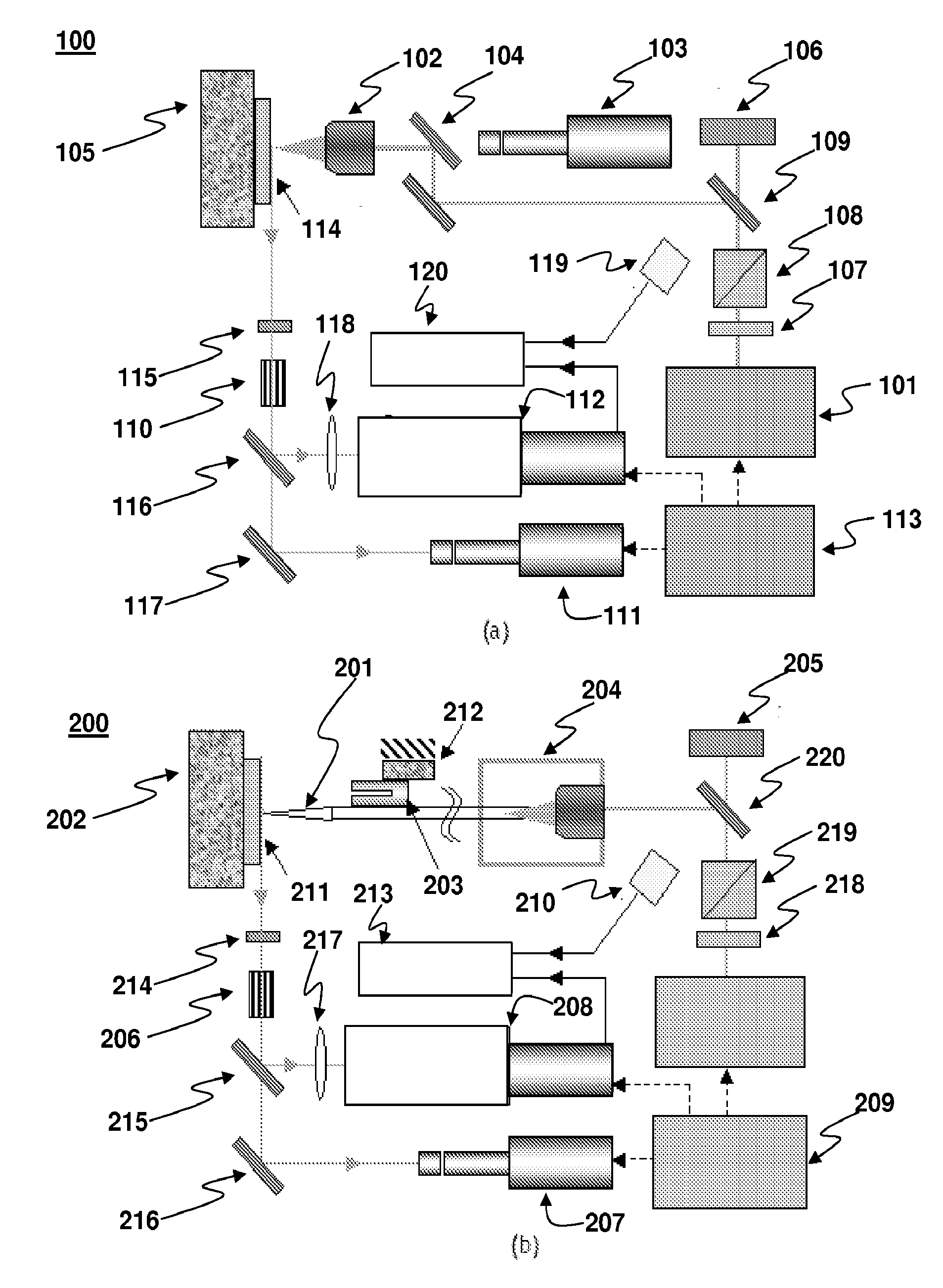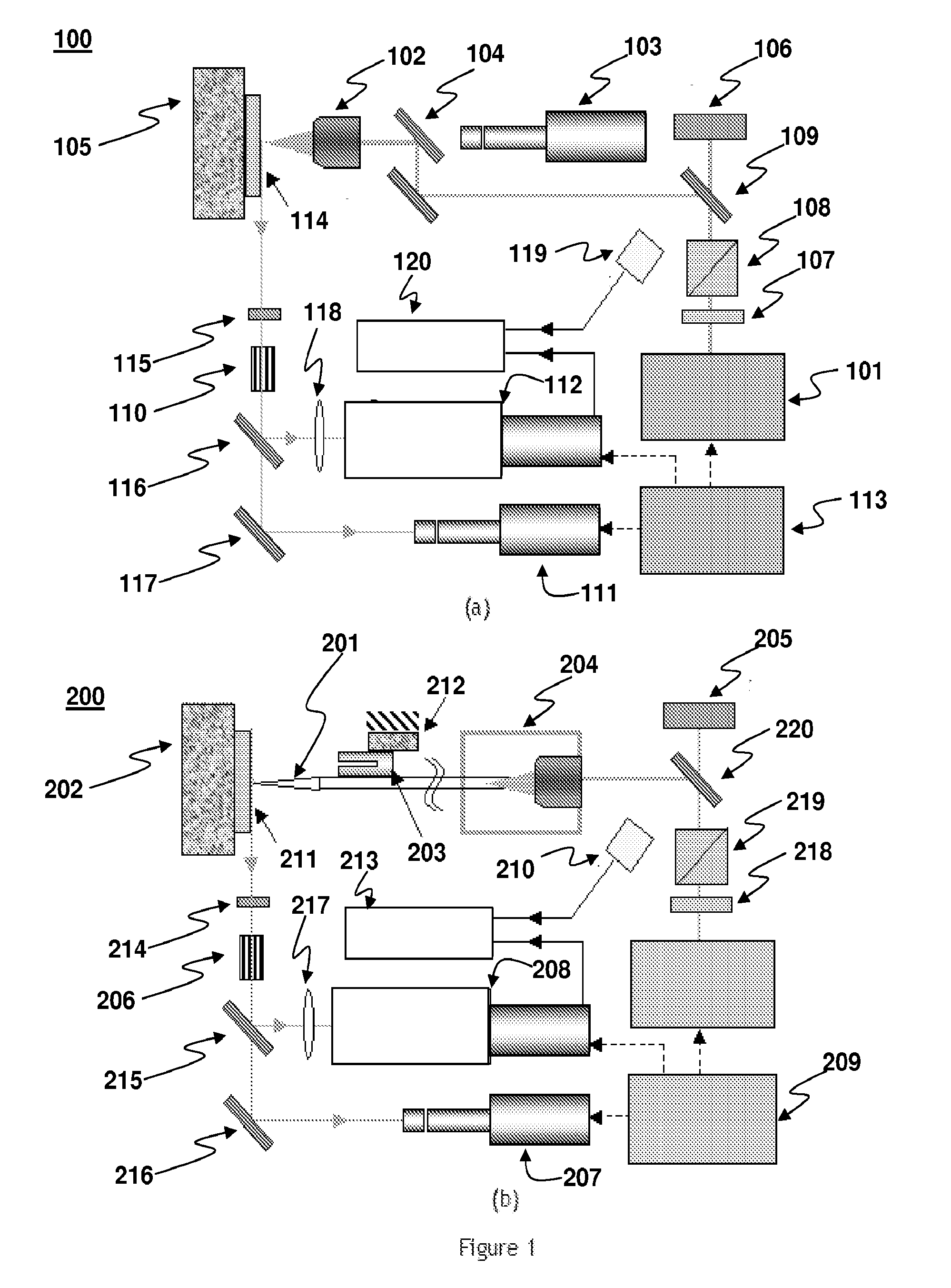High-Resolution Laser Induced Breakdown Spectroscopy Devices and Methods
a breakdown spectroscopy and high-resolution technology, applied in the direction of optical radiation measurement, instruments, spectrometry/spectrophotometry/monochromators, etc., can solve the problem of making the detection of plasma emission signals more difficul
- Summary
- Abstract
- Description
- Claims
- Application Information
AI Technical Summary
Benefits of technology
Problems solved by technology
Method used
Image
Examples
examples
[0068]FIG. 1(a) shows a schematic diagram of the objective lens based (i.e., optical far-field) ablation and plasma emission measurement device 100. Laser pulses of 532 nm wavelength and 4 ns to 6 ns temporal pulse width from a nanosecond laser 101 (Q-switched Nd:YAG, New Wave Research, Fremont, Calif.) were focused through an objective lens 102. Two different objective lenses with numerical aperture (NA) values of 0.14 and 0.7 were tested, thereby achieving laser focal spot diameters of 7 μm and 1.5 μm, respectively. The same objective lenses were used for in-situ monitoring of the target sample surface by a white light source and via a zoom lens (12×), a charge-coupled device (CCD) camera 103 and a cathode ray tube (CRT) monitor (not pictured). The white light beam was combined with the laser beam by a dichroic mirror (DM) 104. The acquired in-situ surface image provided a useful means for adjusting the exact focal length of the objective on the target sample surface. In-situ imag...
PUM
 Login to View More
Login to View More Abstract
Description
Claims
Application Information
 Login to View More
Login to View More - R&D
- Intellectual Property
- Life Sciences
- Materials
- Tech Scout
- Unparalleled Data Quality
- Higher Quality Content
- 60% Fewer Hallucinations
Browse by: Latest US Patents, China's latest patents, Technical Efficacy Thesaurus, Application Domain, Technology Topic, Popular Technical Reports.
© 2025 PatSnap. All rights reserved.Legal|Privacy policy|Modern Slavery Act Transparency Statement|Sitemap|About US| Contact US: help@patsnap.com



